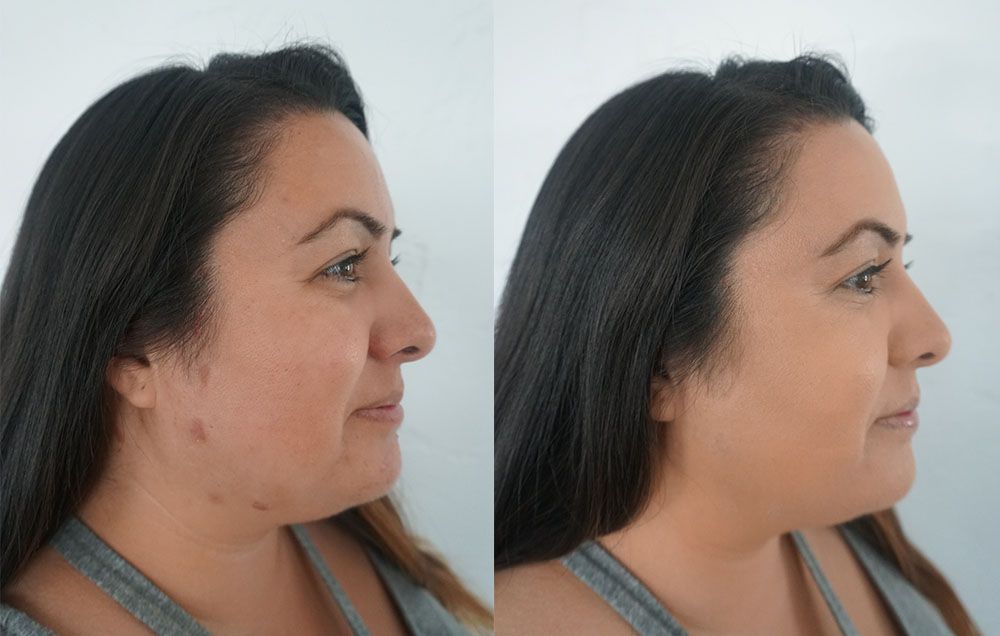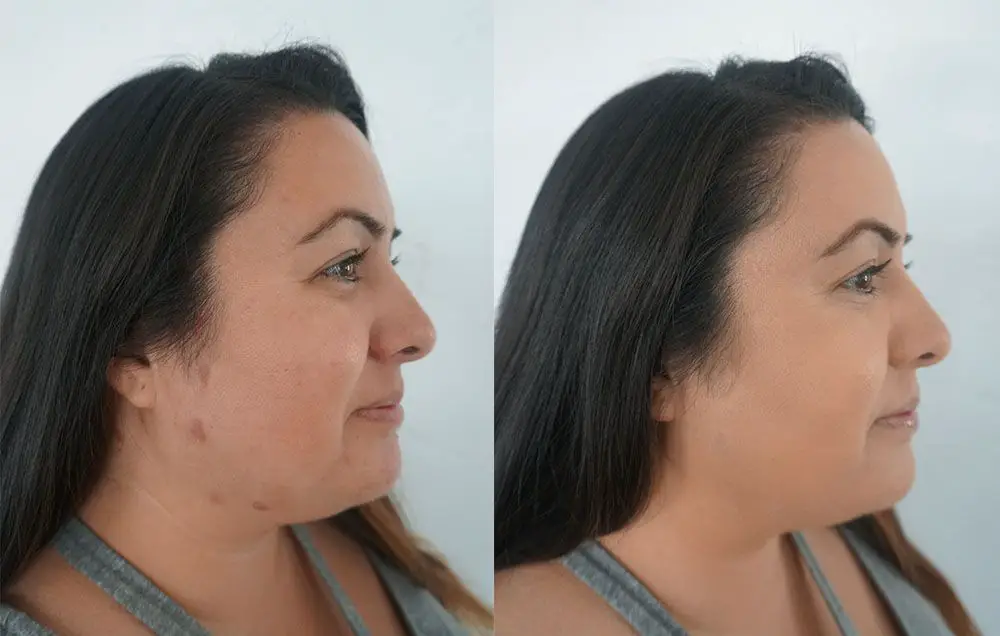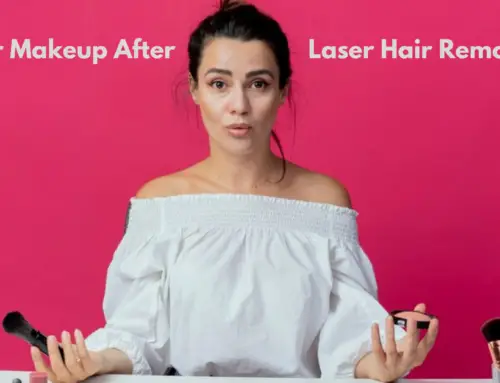When it comes to covering up a scab with makeup, many people may feel a bit unsure about the best approach. But fear not, there are effective techniques that can help camouflage a scab and give you the confidence to face the world. With a few tips and the right products, you can easily disguise a scab and achieve a flawless complexion.
To cover up a scab with makeup, follow these steps:
- Start by cleansing your skin and gently patting the scab dry.
- Apply a thin layer of moisturizer to soften the scab.
- Using a color corrector, dab a small amount onto the scab to neutralize any redness.
- Next, apply a full-coverage concealer that matches your skin tone directly onto the scab.
- Set the concealer with a translucent powder to ensure long-lasting coverage.
- Finally, apply foundation and blend it seamlessly into the surrounding skin.

How to Cover Up a Scab with Makeup
Scabs can be unsightly and make you self-conscious, especially if they’re on your face. Fortunately, with the right makeup techniques, you can effectively cover up a scab and feel more confident in your appearance. In this article, we will provide you with detailed information on how to cover up a scab with makeup in a professional and easy-to-follow manner.
1. Clean and Prepare the Scab
Before you begin applying makeup, it is essential to clean the scab and prepare the area. Start by gently cleansing the scab with a mild cleanser and water. Pat it dry with a clean towel. Be careful not to pick at the scab, as this can hinder the healing process and make it more difficult to cover up with makeup.
Next, apply a thin layer of moisturizer to the scab and the surrounding skin. This will help create a smooth surface for makeup application and prevent the scab from appearing dry or flaky.
Allow the moisturizer to absorb into the skin for a few minutes before moving on to the next step.
2. Color Correct the Scab
Scabs often have a different color than the surrounding skin, which can make them more noticeable. To counteract this, you can use color correction techniques to minimize the appearance of the scab.
If the scab has a red or pinkish hue, use a green color corrector to neutralize the redness. Apply a small amount of green corrector directly onto the scab and gently blend it out using a clean fingertip or a small brush. Be sure to blend the edges well to ensure a seamless finish.
If the scab has a brownish or darker color, a peach or orange color corrector can help neutralize the darkness. Apply a small amount of the corrector onto the scab and blend it out until it seamlessly blends with the surrounding skin.
After color correcting, you can move on to foundation application to further conceal the scab.
3. Apply Foundation and Concealer
Foundation and concealer are key components in covering up a scab with makeup. Choose a foundation that matches your skin tone and apply it evenly to your face, including the scab. Use a foundation brush, sponge, or your fingertips to blend it out, ensuring a seamless finish.
If the scab is still visible after applying foundation, you can use a high-coverage concealer to further camouflage it. Dab a small amount of concealer directly onto the scab and gently blend it out using a tapping or patting motion. Blend the edges well to avoid any harsh lines.
Set the foundation and concealer with a setting powder to ensure long-lasting coverage. This will help prevent the makeup from smudging or sliding off throughout the day.
4. Other Tips and Considerations
Here are some additional tips and considerations to keep in mind when covering up a scab with makeup:
- Choose non-comedogenic and hypoallergenic makeup products to prevent further irritation or breakouts.
- Avoid applying heavy layers of makeup, as this can draw attention to the scab.
- Blend the makeup well and be mindful of any stark color contrasts between the scab and the surrounding skin.
- Consider using a makeup setting spray to enhance the longevity of your makeup.
- If the scab is not healing properly or you are unsure about covering it with makeup, consult a dermatologist for professional advice.
Can I Apply Makeup on a Healing Scab?
It is generally safe to apply makeup on a healing scab, as long as you follow proper cleansing and preparation steps. However, it is important to note that everyone’s healing process may vary, and what works for one person may not work for another. If you experience any discomfort, irritation, or worsening of the scab, it is best to avoid makeup application and consult a healthcare professional.
Always prioritize your skin’s health and ensure proper healing before attempting to cover up a scab with makeup. Remember to be gentle with the scab and avoid picking at it, as this can prolong the healing time and potentially lead to scarring.
Key Takeaways: How to Cover Up a Scab with Makeup
- Prepare the scab area by cleaning it gently with a mild cleanser and applying a soothing ointment.
- Choose a full-coverage concealer that matches your skin tone and gently apply it over the scab using a clean brush or sponge.
- Blend the concealer seamlessly into the surrounding skin, making sure to feather the edges to avoid a noticeable contrast.
- Set the concealer with a thin layer of translucent powder to make it long-lasting and prevent smudging.
- Finish by applying a thin layer of foundation and setting it with setting spray to ensure a natural and even look.
Frequently Asked Questions
When it comes to covering up a scab with makeup, there are a few key things to keep in mind. Proper technique and the right products can help to ensure a natural-looking cover-up that blends seamlessly with your skin. Here are some frequently asked questions and their respective answers to help you in achieving a flawless coverage.
1. How can I prepare my scab before applying makeup?
Before applying makeup to cover up a scab, it’s important to properly clean the area. Gently cleanse the scab and the surrounding skin with a mild cleanser and warm water. This will remove any dirt or bacteria that may interfere with the makeup application. Pat the area dry with a clean towel, being careful not to irritate the scab.
Next, apply an antibacterial ointment to the scab. This will help to promote healing and prevent infection. Give the ointment a few minutes to absorb into the skin before moving on to the next step. If the scab is dry or flaky, you can gently exfoliate it with a soft scrub or a clean, damp cloth to smooth the surface.
2. What type of makeup should I use to cover up a scab?
For covering up a scab, it’s best to choose a full-coverage foundation or concealer. Opt for a formula that matches your skin tone as closely as possible to achieve a seamless blend. Cream or liquid foundations with a matte finish tend to work well for this purpose. Make sure to select a product that is non-comedogenic, to avoid clogging the pores or causing further irritation.
When it comes to application, you can use either a makeup brush or a clean fingertip to lightly dab the product onto the scab. Start by applying a thin layer and gradually build up the coverage if needed. Avoid rubbing or dragging the product over the scab, as this can disrupt the healing process or cause the scab to come off prematurely.
3. How can I ensure a natural-looking finish when covering up a scab with makeup?
To achieve a natural-looking finish, it’s important to blend the makeup seamlessly with the surrounding skin. After applying the foundation or concealer, gently blend the edges using a clean fingertip or a makeup sponge. This will help to soften any visible lines or demarcations and create a more natural appearance.
You can also set the makeup with a translucent powder to enhance longevity and further blur the appearance of the scab. Use a fluffy brush to lightly dust the powder over the area, focusing on the edges. Be gentle to avoid disturbing the makeup underneath.
4. Can I apply other makeup products on top of the covered scab?
Absolutely! Once you have covered up the scab with foundation or concealer, you can proceed with the rest of your makeup routine as usual. Apply your favorite products such as blush, bronzer, eyeshadow, and lipstick to enhance your overall look. Just make sure to be gentle and avoid directly touching or rubbing the covered area, as this can disrupt the makeup or cause it to come off.
If you find that the scab starts to become visible throughout the day, you can carry a small touch-up kit with you. This can include your chosen foundation or concealer, a clean brush or sponge, and a compact mirror for touch-ups on the go.
5. How can I ensure the makeup stays in place and doesn’t rub off the scab?
To ensure that the makeup stays in place and doesn’t rub off the scab, it’s important to use a long-lasting setting spray. Once you have finished applying your makeup, hold the setting spray a few inches away from your face and spritz it lightly over the covered area. This will help to lock the makeup in place and extend its wear.
Avoid touching or rubbing the covered area throughout the day, as this can cause the makeup to transfer or smudge. If you need to dab away any excess oil or sweat, gently blot the area with a clean tissue or blotting paper instead of rubbing. This will help to preserve the coverage and keep the makeup intact.

To cover up a scab with makeup, follow these simple steps. First, cleanse the area gently with a mild cleanser to remove any dirt or oils.
Then, apply a thin layer of moisturizer to hydrate the skin and create a smooth surface. Next, use a creamy concealer that matches your skin tone to camouflage the scab. Dab the concealer with your finger or a small brush, blending it carefully into the surrounding skin.
Afterward, set the concealer with a dusting of translucent powder to help it stay in place. If necessary, repeat the concealer application and powder to ensure optimal coverage.
Finally, finish off the makeup look by applying foundation and other makeup products as desired. Remember to be gentle and avoid picking or scratching the scab, as this can slow down the healing process.
By following these steps, you can effectively cover up a scab with makeup and feel confident in your appearance.






Leave A Comment